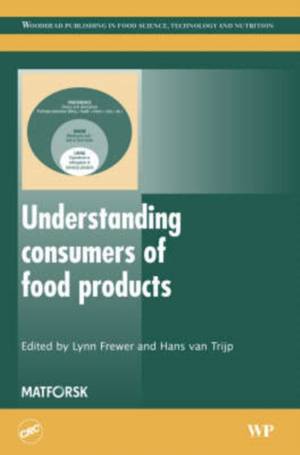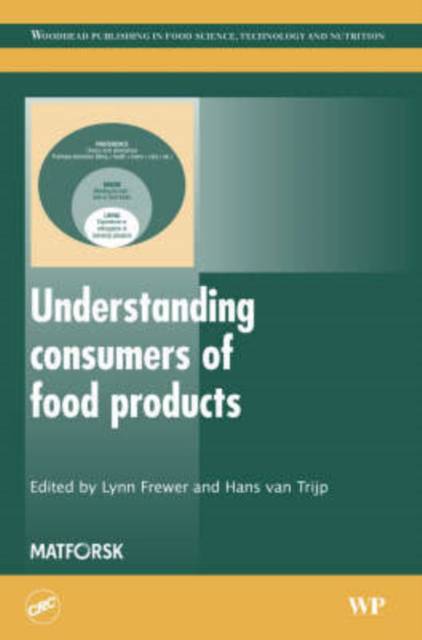
- Retrait gratuit dans votre magasin Club
- 7.000.000 titres dans notre catalogue
- Payer en toute sécurité
- Toujours un magasin près de chez vous
- Retrait gratuit dans votre magasin Club
- 7.000.000 titres dans notre catalogue
- Payer en toute sécurité
- Toujours un magasin près de chez vous
Understanding Consumers of Food Products
307,45 €
+ 614 points
Description
In order for food businesses, scientists and policy makers to develop successful products, services and policies, it is essential that they understand food consumers and how they decide which products to buy. Food consumer behaviour is the result of various factors, including the motivations of different consumers, the attributes of specific foods, and the environment in which food choices occur. Recognising diversity between individual consumers, different stages of life, and different cultural contexts is increasingly important as markets become increasingly diverse and international. The book begins with a comprehensive introduction and analysis of the key drivers of consumer food choices, such as the environment and sensory product features. Part two examines the role of consumers' attitudes towards quality and marketing, and their views on food preparation and technology. Part three covers cultural and individual differences in food choice as well as addressing potentially influential factors such as age and gender. Important topics such as public health and methods to change consumers' preferences for unhealthy foods are discussed in part four. The final section concludes with advice on developing coherent safety policies and the consumers' responsibility for food production and consumption. Understanding consumers of food products is a standard reference for all those in the food industry concerned with product development and regulation.
Spécifications
Parties prenantes
- Editeur:
Contenu
- Nombre de pages :
- 696
- Langue:
- Anglais
- Collection :
Caractéristiques
- EAN:
- 9781845690090
- Date de parution :
- 22-12-06
- Format:
- Livre relié
- Format numérique:
- Genaaid
- Dimensions :
- 164 mm x 239 mm
- Poids :
- 1156 g






